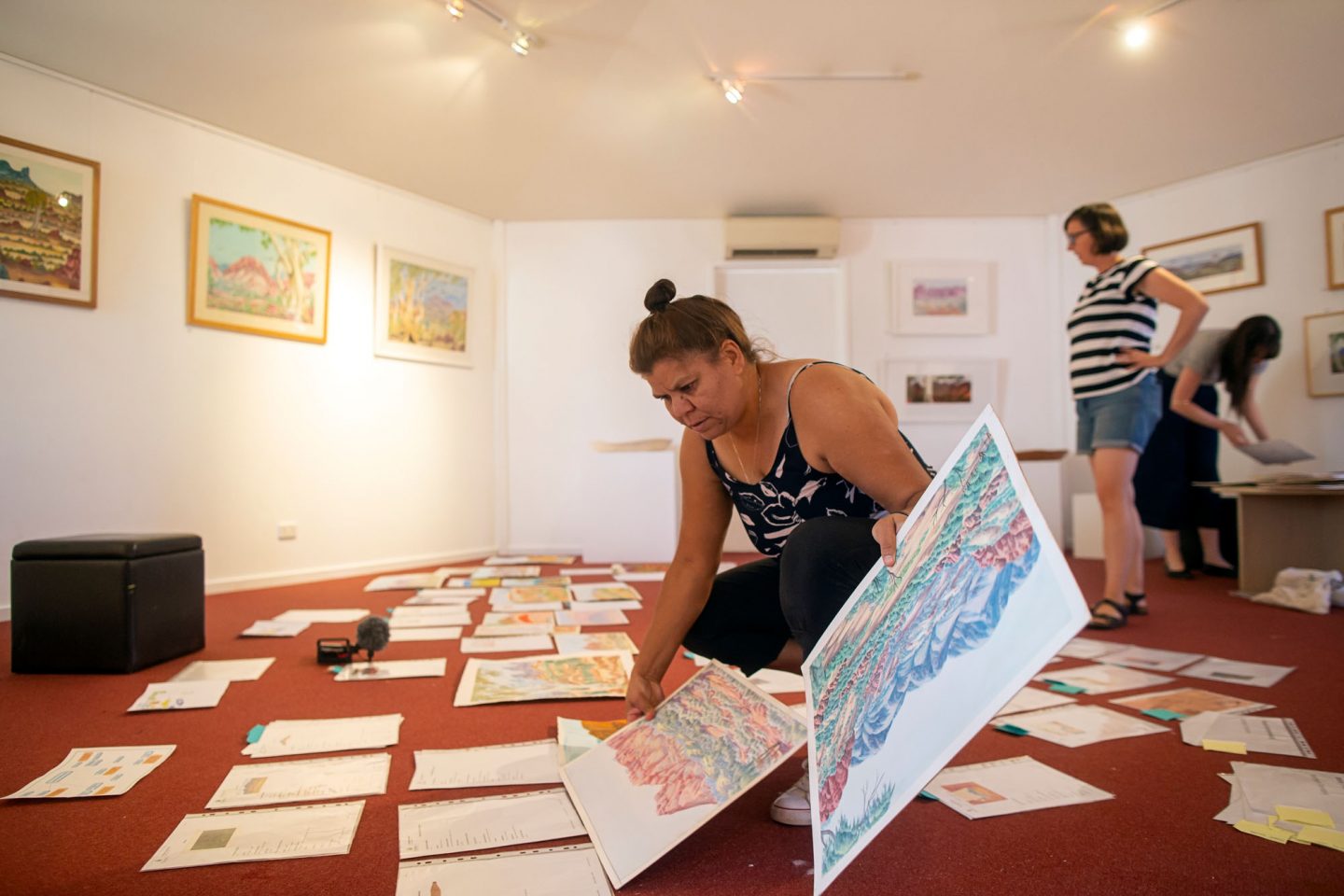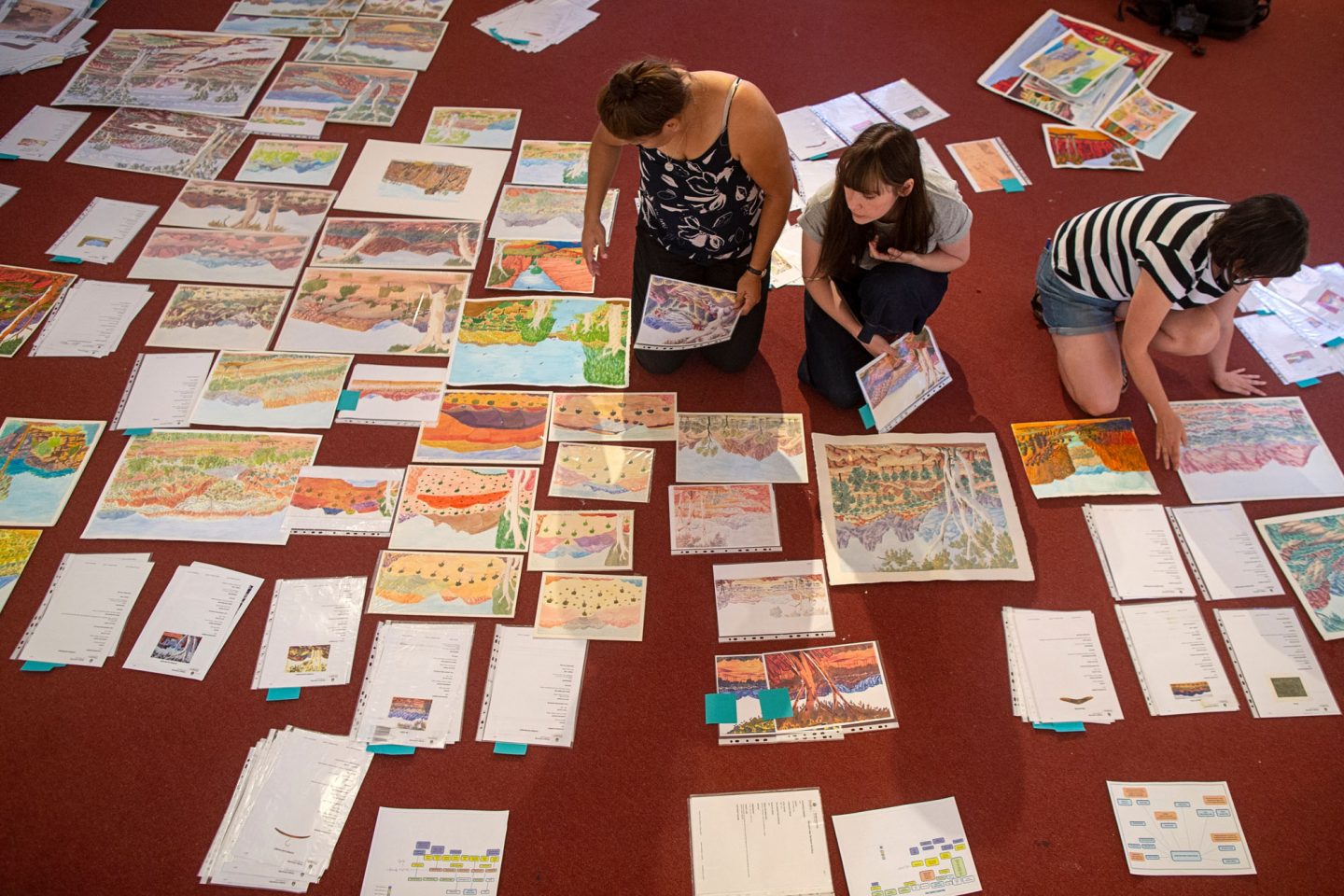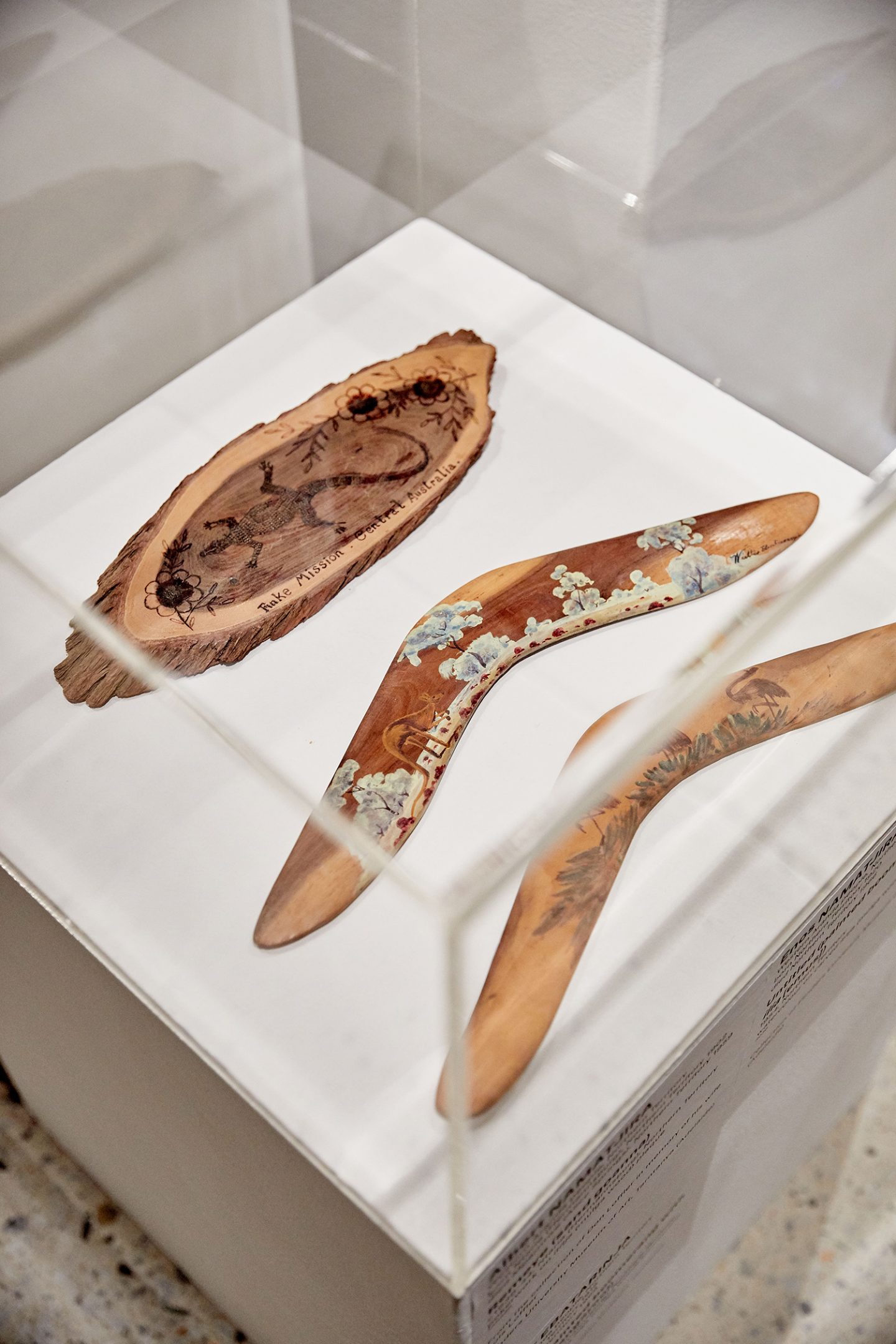“Albert Namatjira was a man who traversed two worlds,”
says Flinders University exhibitions assistant Madeline Reece, one of three
co-curators of the exhibition Tjina
Nurna-ka, Pmarra Nurna-kanha, Itla Itla Nurna-kanha: Our Family, Our Country,
Our Land, currently showing at both the
Art Gallery of South Australia and Flinders University Museum of Art (FUMA).
The
exhibition explores the output of artists past and present from the Hermannsburg
community west of Alice Springs, where the prolific artist Albert Namatjira
painted the watercolours of the landscape that propelled him to international
fame.
As
Australia’s most celebrated Aboriginal artist, Namatjira’s talent landed him in
a world of contradictions and tensions in which he was both admired and
ostracised, wealthy yet, for a long time, unable to buy land for his family to
establish a home away from the trauma inflicted by the Hermannsburg Lutheran
Mission.
Even
Namatjira’s masterful watercolours existed somewhere in this peculiar
disjunctive. His painting style was founded on European techniques taught to
him by painter Rex Battarbee, who visited the region in 1934 and later returned
as a supporter and advocate of the Hermannsburg School of artists.
 Marisa Maher, Iltja Ntjarra Gallery, Alice Springs, April 2019
Marisa Maher, Iltja Ntjarra Gallery, Alice Springs, April 2019
Namatjira
developed a singular visual language that borrowed from western painting
traditions but expressed his people’s vivid spiritual devotion to the red
mountain ranges and wide plains of Tjoritja. These painterly homages to the
desert were hung in gilded frames in city galleries by white men. For a man
whose culture was grounded in deep familial connections, being catapulted to
the uppermost heights of the Australian art world must have been a bizarre and,
at times, isolating experience.
Namatjira
and his wife, Rubina, were the first Aboriginal people to be granted Australian
citizenship in 1957. Yet, soon after this he was accused of supplying alcohol
to non-citizens within the community (a charge he denied) and was imprisoned
for two months. Shortly after his release, at the age of 57, Namatjira died.
Western
Arrernte woman and curator-in-residence of the exhibition, Marisa Maher has
pieced together a vibrant and thoughtful exhibition that draws connections
between contemporary works from a new generation of Hermannsburg artists and
the historic works by Namatjira and his contemporaries from the collections of
AGSA and Flinders University.
“The
artworks are arranged based on the landscape or region that the artists are
painting, which was a nice way to show some of the first-generation painters
alongside established and emerging artists,” says Maher. During early planning
for the exhibitions, Reece and Nic Brown, collections curator at Flinders
University, travelled to Hermannsburg to meet with Maher, who is assistant
manager at Iltja Ntjarra Many Hands Art Centre and has her own family
connections to the region. “My grandmother and mother were born in Hermannsburg
and I also grew up there,” she says.
 Marisa Maher, Madeline Reece and Nic Brown, Iltja Ntjarra Gallery, Alice Springs, April 2019
Marisa Maher, Madeline Reece and Nic Brown, Iltja Ntjarra Gallery, Alice Springs, April 2019
“My
grandmother was the younger sister of the artists Reuben, Edwin and Otto Pareroultja and she spent a lot of time
around Albert as well.” Reece and Brown travelled with printouts of several
important works from early Hermannsburg artists that the community had never
seen before. “The people we spoke with were so proud that their relatives’ work
is so highly valued and that they were painting in that style and continuing that
tradition,” says Reece.
“We
left the printouts with them and were happy that they had this new visual
dictionary for inspiration as well.”
Importantly,
under Maher’s curation, Tjina
Nurna-ka, Pmarra Nurna-kanha, Itla Itla Nurna-kanha reads as a celebration of Albert Namatjira’s
continuing legacy at one of Australia’s most prolific art centres.
Among
dozens of artists included in the exhibition are Namatjira’s living granddaughters
Gloria Panka and Betty Naparula Wheelerand his great-granddaughter Benita
Clements, whose recent work juxtaposes traditional Hermannsburg landscapes with
symbols from contemporary culture (think, for example, of the Google logo
embedded into Tjoritja like the Hollywood Hills sign).
 Installation view: Tjina Nurna-ka, Pmarra Nurna-kanha, Itla Itla Nurna-kanha: Our Family, Our Country, Our Legacy, Tarnanthi 2019, Flinders University Museum of Art, Bedford Park
Installation view: Tjina Nurna-ka, Pmarra Nurna-kanha, Itla Itla Nurna-kanha: Our Family, Our Country, Our Legacy, Tarnanthi 2019, Flinders University Museum of Art, Bedford Park
The
celebrated painter Ivy Pareroultja is hung in the same room as her father,
Edwin Pareroultja, who was Namatjira’s contemporary and Mahler’s great uncle.
Nearby is another highlight: the work of senior artist Mervyn Rubuntja, who
moved to Hermannsburg at the age of 13 where he observed his uncles Maurice,
Oscar and Keith Namatjira carrying on their father’s visual legacy.
This
exhibition comes after the copyright for Namatjira’s work was finally returned
to the family along with a compensation settlement from the NT government just
last year, 35 years after the copyright to his work was sold without family consent.
Like
many gifted people who belong to social minorities, Namatjira’s talent would
become his Achilles heel. He was rewarded for his gifts one day by the same hand
that cruelly punished him the next. But Tjina
Nurna-ka, Pmarra Nurna-kanha, Itla Itla Nurnakanha does not linger too long on the sadnesses and
injustices of Namatjira’s life. Instead, it bravely celebrates a great and ever-expanding
legacy that is very much alive and thriving.
Until 27 January 2020
Tjina Nurna-ka, Pmarra Nurna-kanha, Itla Itla Nurna-kanha: Our Family, Our Country, Our Legacy
Related Article
Tarnanthi 2019 program invites Australia to reflect on the past and pay the rent
Get the latest from The Adelaide Review in your inbox
Get the latest from The Adelaide Review in your inbox